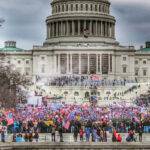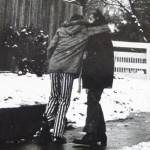I ended the last blog by saying that the current race movement is carrying the country toward extremism and further and further from changing racial attitudes. Radical positions like condemning whole civilizations may sound noble, but it accomplishes nothing—except ridicule, perhaps. Consciousness-raising, making America aware that it has a race problem, has been going on since the Sixties—sixty years. I’m sure it has already achieved whatever guilt-raising and defensiveness can do. As a Midwestern WASP, I assure you I’m burnt-out on the subject of racial guilt. I can also tell you what did change my attitudes toward the African American population.
I began life in the academic bubble around the University of Chicago (Hyde Park, by name) on the South Side of Chicago—the black side today. Hyde Park is bound by Lake Michigan and Jackson Park on the east and Washington Park on the west. Jackson Park was white, Washington Park, black. African Americans ventured east of the park only as maids, coal men, and other such occupations. I was always aware of these facts, though they were never a topic of conversation. It was the way things were.
But as a city kid, I was, unlike rural Midwesterners, always in the midst of racial and class diversity of all kinds. It was the Depression, so no one had a car; we took public transportation. We attended public school with the neighborhood poor, largely Appalachian in those days. The elementary school had an excellent principal, but upon his sudden death, the school descended to Chicago’s notoriously low level, and we were pulled out one by one. The last, my youngest brother, was solicited by the local gang, which was white. So my first awareness was of class hostility, not race. All of this, I believe, was quite different from the experience of the rural Midwest, where there was little contact with diversity of any kind.
Then, when I was a teenager, the African American community began to move east of Washington Park. Yes, there was commotion and fear. The Appalachian population disappeared very quickly. As anyone who has studied race in America would expect, the poorest feel the most threatened. There was also fear within my own family, but no talk of leaving the neighborhood. The university acted quickly, setting up the Southeast Crime Commission to preserve the safety of the academic community. That the problem was named safety rather than race may have been a dodge, but it goes to the heart of the problem—fear.
I’m no expert of the history of the Commission, but it was followed by years of destruction of tenements deserted by the white poor, building of condominiums and townhouses, and relocations of various sorts. Though I’m sure today the Commission would be accused of racism and misuse of power, the goal was to become integrated but prevent becoming a ghetto, and in this they largely succeeded. My parents never talked of leaving. When their apartment building was slated for the wrecking ball, they bought their one and only house—in the neighborhood. Today, Hyde Park is integrated, and is the home of the Obamas.
During this period, our lives went on virtually unchanged, although we certainly became aware that race was a problem we were a part of. My sister and I graduated from the university and got married in our turn, followed by our brothers. Then I went to work for the Chicago Department of Welfare, and African Americans became part of my working life. My supervisor and most of my fellow workers were black, and I worked in the South Side’s black ghetto. I am eternally grateful that I became an adult before civil rights became an all-consuming issue where I had to be aware that every word I said would be under scrutiny. I remember my boss as being one of the warmest and laid-back people I’ve worked for and my colleagues as friends. I don’t recall that they treated me as an oddity either. The only tension I remember was the brief addition of a white male to our unit of four, who simply couldn’t relax and so made everyone else aware of his “whiteness.”
My clients in the tenements of pre-housing project Chicago were more guarded. I was the social worker, of course. And yes, I was afraid, but it soon became evident that social workers were a familiar phenomenon in those streets, so the sense of threat vanished. From the retired coal-man who, in crisp white shirt and creased trousers, welcomed me to his spotless rooms, the elderly lady who wore a charm around her neck to keep me safe, the filthy mound of flesh living in a garbage pit of a room, to the huge man I learned later was an escapee from the mental hospital, I met Chicago’s black poor. They would later become characters in my novels, not necessarily black. Were their lives different from mine? Yes. They were poorer, yes, and they were uneducated, but that doesn’t describe it either. As I remember those people what returns is, alternately, their resigned acceptance of and despair at their lot.
I knew them, both colleagues and clients, and remain to this day convinced that the only lasting change in attitude comes from personal contact. If I were to try it today when both sides are so hyper-aware of the spotlight upon us, I don’t know whether it could work, but I still believe it’s necessary. When my husband and I moved to Ann Arbor, we quite accidentally moved to a racially mixed neighborhood, and when, a year later, we bought a house, we elected to stay there. We did not make any issue of this to our two daughters. The children in my first novel, Nowhere Else to Go, are fictional versions of the boys and girls who trouped in and out of our house over the years. Later, boyfriends of both races came and went. Did that upset us? Yes, at first, but, like the many other shocks adolescents provide, we kept it to ourselves The most long-lasting was a boy who, years earlier had knocked at my door, saying his friend had fallen off his bike. Did I have some band-aids? That’s where I want to live.



Comments are closed.